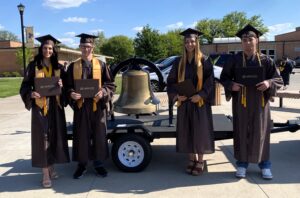
An economic impact study released by Garden City Community College revealed the college has a $124.5 million annual impact, or supports 2,182 jobs, in the GCCC service area.
One out of every 18 jobs in the service area are supported by the activities of GCCC and its students.
The study also found high returns on investment in GCCC, highlighting its value beyond a traditional educational institution as a regional workforce-development and economic powerhouse.
In return for their investment, GCCC students will receive higher future earnings that will continue to grow throughout their working lives.
For example, the average GCCC associate degree graduate from FY 2021-22 will see annual earnings that are $17,100 higher than a person with a high school diploma or equivalent working in Kansas.
For every dollar students invest in GCCC in the form of out-of-pocket expenses and forgone time and money, they will receive a cumulative value of $12.00 in higher future earnings (a benefit-cost ratio of 12.0).
GCCC President Dr. Ryan Ruda said the results show that Garden City Community College is achieving its mission to produce positive contributors to the economic and social well-being of society.
“GCCC stands as a crucial cornerstone in our community, contributing significantly to educational achievements, workforce development, and economic expansion,” Ruda said. “The college provides affordable, high-quality programs that generate substantial returns for our students, allowing them to fill vital roles within our region, which is a mutually beneficial arrangement for our economy and graduates.”
For taxpayers, the benefits and costs yield a benefit-cost ratio of 2.2. For every dollar of public money invested in GCCC, taxpayers will receive a cumulative value of $2.20 over the course of the students’ working lives.
GCCC’s $124.5 million annual economic impact is a result of $16.4 million in operational spending, $0.4 million in capital spending, $2.6 million in student spending, and $105.2 million in added alumni income during the 2021-2022 fiscal year, according to the study conducted by Lightcast, a labor market analytics firm.














